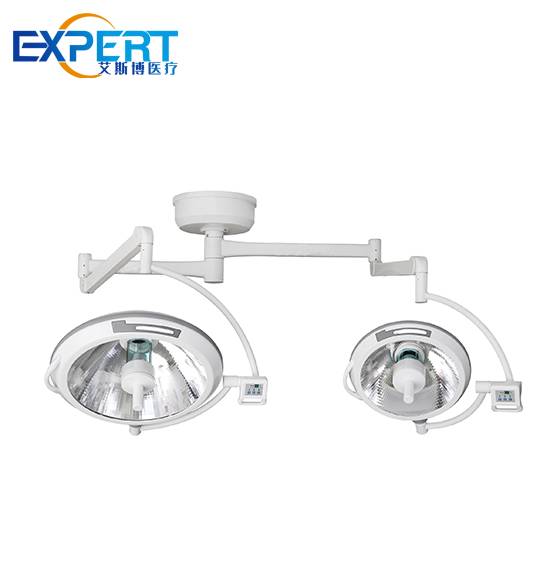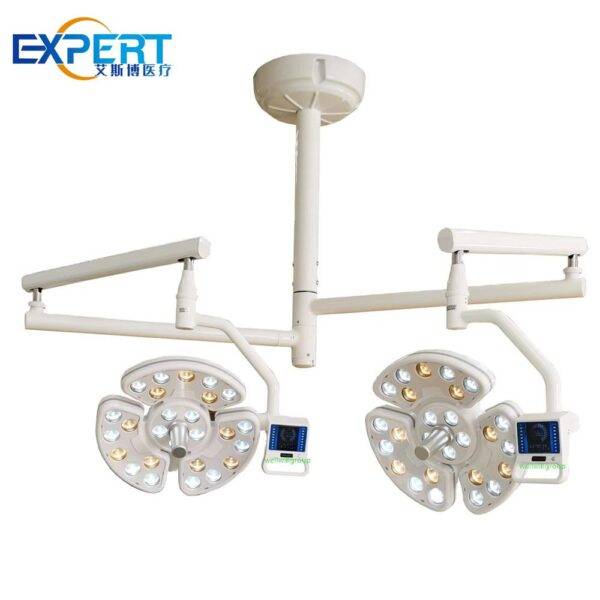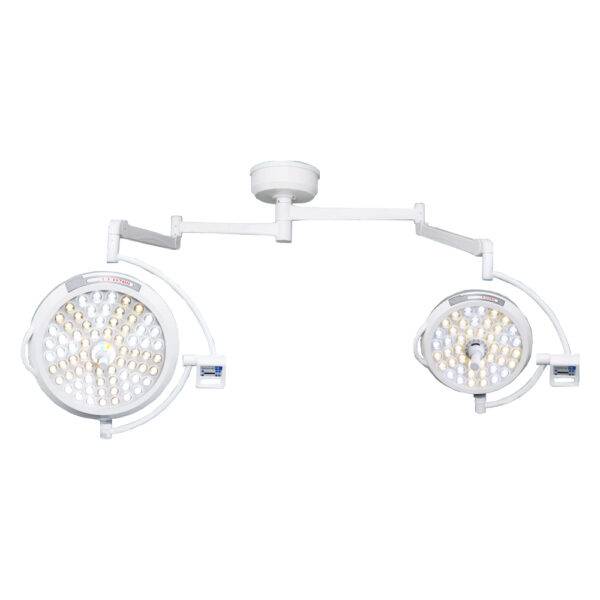عنوان
304 شارع الكاردينال الشمالي
مركز دورتشستر ، ماساتشوستس 02124
ساعات العمل
من الاثنين إلى الجمعة: 7 صباحًا - 7 مساءً
عطلة نهاية الأسبوع: 10 صباحًا - 5 مساءً
Proper illumination in the operating room is vital for performing complex surgeries safely and accurately. Surgical lights provide focused, shadow-free lighting over the patient, allowing surgeons to visualize delicate anatomy and tissue layers clearly. With advanced surgical techniques and minimally invasive approaches, the need for optimal lighting has become even more critical. This article provides a comprehensive guide to selecting the right surgical lights to illuminate your surgical suite.

Measured in lux or foot-candles, light intensity refers to the brightness of the light. Look for surgical lights offering intensities of 100,000 lux or higher at a distance of 1 meter for the best illumination of deep body cavities. Higher the lux, better the visibility even in layered tissue.
This measures the ‘warmness’ or ‘coolness’ of light. Surgical lights usually offer color temps between 3,700K to 5,000K, mimicking natural daylight for ideal tissue rendition. Make sure lights allow adjusting color temperature for surgeons’ preference.
CRI indicates how accurately colors are revealed under the light. The highest CRI of 95-100 is vital for surgical lights to distinguish anatomical landmarks and assess tissues accurately.
Multiple overlapping lightheads, parabolic reflectors and diffusers help surgical lights minimize shadows during surgery. Look for soft, uniform, shadow-controlled illumination.
Surgical lights should allow adjusting the illuminated spot size from around 8 inches for focused cavity lighting up to 14 inches or more for broader incision lighting. Touchscreens or automated adjustments are convenient.
This indicates how far below the skin surface the light penetrates to illuminate deep tissues and cavities clearly. Optimal depth of field is around 20 inches.
Prolonged exposure to surgical lighting can get uncomfortably hot for surgeons. Lights with efficient thermal design and low heat emissions enhance comfort.
The ability to position the lights easily over different sites and angles allows optimal lighting as surgeons shift around the patient. Flexible arm and head rotation range of 330° or greater provides maximum maneuverability.

LED surgical lights offer powerful, uniform, shadow-free illumination in a streamlined design. Benefits include:
Halogen lights use a tungsten filament and halogen gas. Advantages include:
Drawbacks are higher heat emissions, shorter lamp life, delays in powering on/off, and more frequent bulb replacements.
Hybrid lights combine LED and halogen technologies, using halogen for primary illumination and LEDs to amplify brightness. This allows matching light quality of halogen and energy savings of LED in one system.
Xenon lights use a xenon arc gas discharge lamp, producing intense light from plasma. Benefits include:
Downsides are extremely high power consumption and heat emissions.









Here are some important factors to assess when choosing and installing أضواء الجراحية:
| عامل | اعتبار |
|---|---|
| Room dimensions | Pick appropriate mounting and boom size |
| Ceiling structural integrity | Ensure it can support weight |
| Number of doors/tables | Allow flexible positioning |
| Ambient lighting | Minimize glare and shadows |
| Backup power supply | Maintain illumination during outages |
| HVAC, airflow | Prevent heat buildup near lights |
| Integration with AV systems | For video recording procedures |
| Budget constraints | Balance performance and costs |
| Future expansion plans | Scalable/movable lights |
| Maintenance needs | Bulb/filter replacement cycles |
| Infection control | Easy sterilization of components |
| Compliance with standards | ANSI, ISO, IEC requirements |
Investing in high-quality, powerful surgical lights improves surgical precision, safety and outcomes by optimizing visibility of patient anatomy. Carefully evaluate lighting intensity, color quality, maneuverability and advanced features when selecting surgical lights. Partnering with a trusted brand helps ensure performance, reliability and support over the long term. Proper lighting allows your surgical teams to perform transformative work.
Common mounting options include:
Ceiling-mounted is most common for major surgery while wall, rail or mobile mounts allow more flexibility.
Most surgeons prefer a field diameter of at least 10 inches but the size can vary from 8 to 14 inches depending on the procedure and cavity depth. Lights with adjustable spot size allow tailoring the beam precisely.
Strategies to reduce heat exposure include using LED technology, heat pipes, heat-resistant handles, forced air cooling, deflectors, mounting lights higher and taking breaks to minimize prolonged exposure.
LED bulb life is around 50,000 hours. Halogen bulbs last for 1500 to 2000 hours typically. Light intensity should also be checked regularly for any degradation over time.
Features aiding disinfection include autoclavable handles, smooth surfaces and protection from liquids, disposable plastic covers and filters, minimal light head rotation to contain air flow, and easy access to components for cleaning.
Surgical lights represent a major load on electrical systems. Dedicated breaker circuits, power conditioners, backup generators, and wiring gauge adequate for the power draw help avoid disruptions.
Advanced features in newer high-end lights include camera/monitor integration, auto adjustments, voice controls, intuitive touchscreens, flexible positioning for hybrid ORs, and even integration with microscopes and endoscopes.
